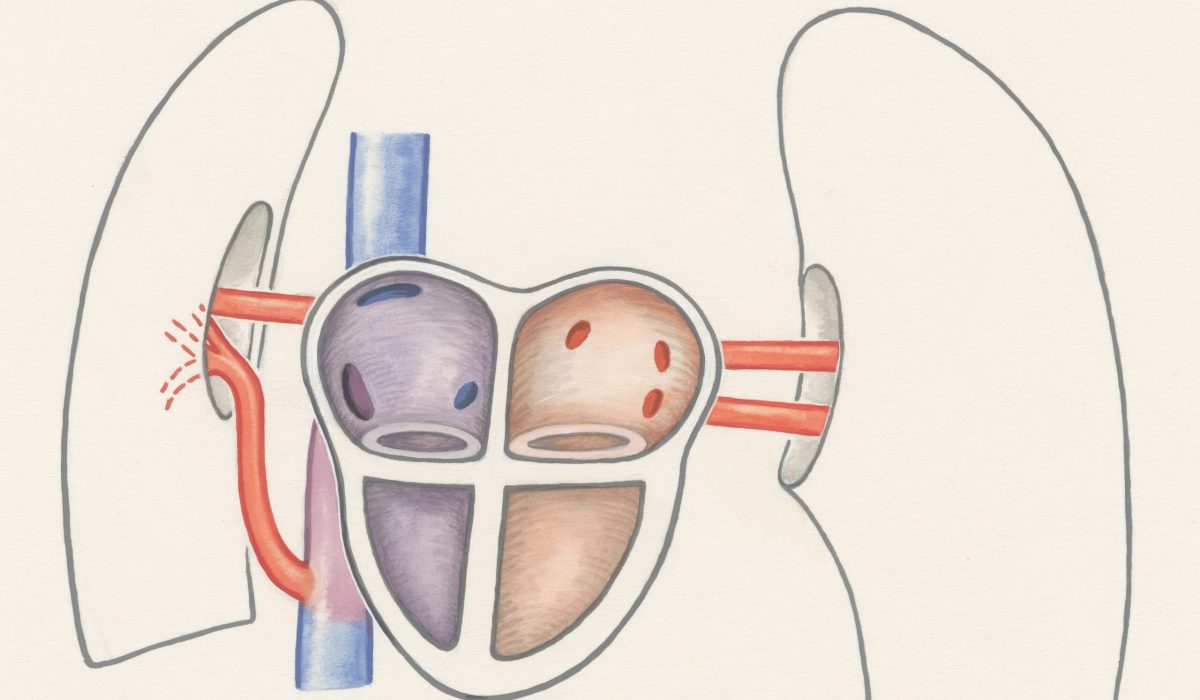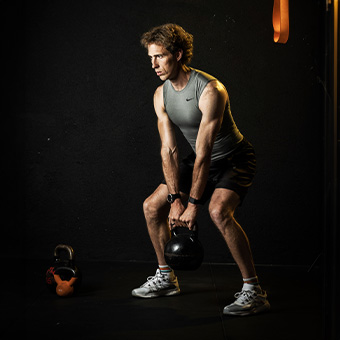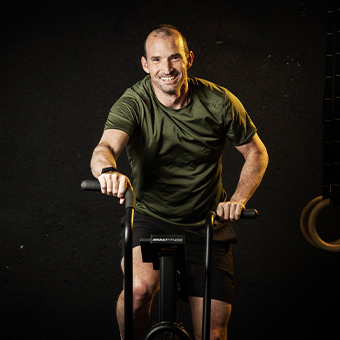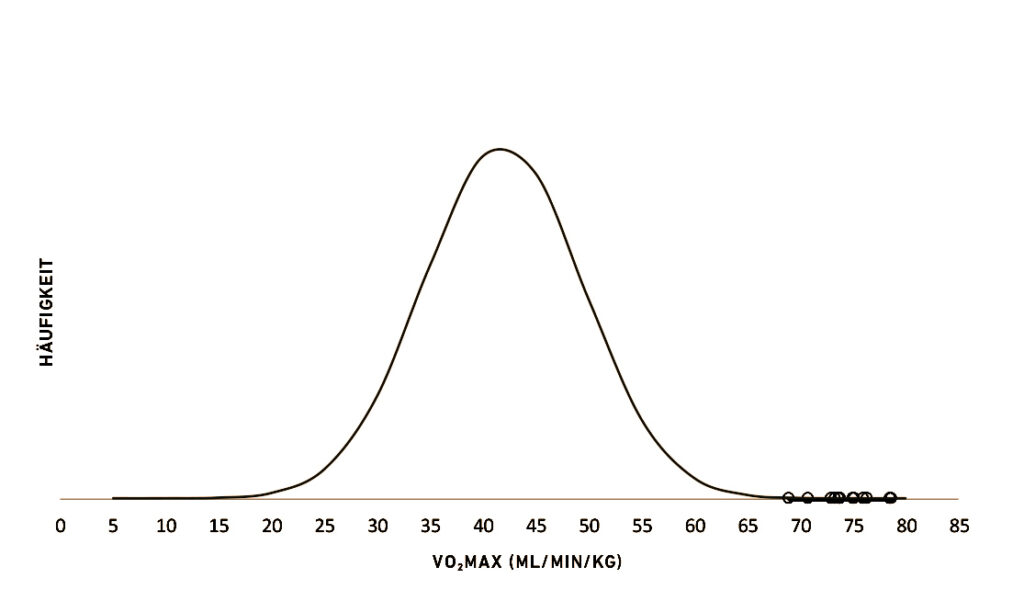Measure VO2max easily and flexibly with EngineCheck
This innovative platform allows you to measure your VO2max precisely and flexibly and determine your training zones – without the need for a lab visit.


EngineCheck
How big is your motor?

VO2max
Do you know your key performance indicator?

Polarized training
Are you already training effectively?
In our last blog post, we looked at optimal nutrition for the upcoming Alpenbrevet, which takes place in just one week’s time.
Today we want to look at another crucial aspect for cycling enthusiasts: performance monitoring.
How fit am I and how can I improve my fitness?
For ambitious cyclists, it used to be complicated and expensive to determine their own VO2max value.
You had to go to special performance laboratories, spend a lot of money and make a new appointment every time you wanted to check your progress.
These tests were not only expensive, but also often time-consuming and inflexible – especially for amateur cyclists who want to improve their performance on a regular basis.
But that’s over now.
If you haven’t heard of EngineCheck you should definitely read on.
EngineCheck offers you an easy way to measure your aerobic capacity at any time and at 32 locations in Switzerland – without a visit to the lab.
This innovative platform was developed by sports scientists such as Nina Zenger in collaboration with Swiss Cycling.
It allows you to determine your VO2max precisely and easily – on real roads under real conditions.
The story behind EngineCheck: from research to practice
EngineCheck was originally developed from a research project for calculating performance in the laboratory. The test was developed to measure the VO2max values of top athletes under controlled conditions in Magglingen. But then came the coronavirus pandemic, and the laboratories at BASPO in Magglingen had to close. As a result, athletes were no longer able to carry out tests or closely monitor their performance development. This unexpected situation presented the researchers with a challenge – and an opportunity at the same time.
The sports scientists recognized the potential of making their methods usable outside of the laboratory.
This gave rise to the EngineCheck – a system that enables cyclists to measure their VO2max on public roads without having to rely on laboratory equipment.
What began as an emergency solution quickly developed into a powerful tool for anyone who wants to improve their endurance.
VO2max: The key to peak performance
A high VO2max is crucial when it comes to being successful in cycling.
But what exactly is VO2max?
Quite simply, it’s the maximum amount of oxygen your body can absorb, transport and use in your muscles during intense exercise.
Oxygen is the key to converting carbohydrates and fats into energy – the energy you need to pedal.

The more oxygen your muscles can process, the more efficient you are.
Your VO2max shows how efficiently your body uses all the systems that absorb oxygen and convert it into energy – from the lungs to the heart and bloodstream to the muscles.
A higher VO2max simply means that your body is better at using oxygen to produce energy.
This allows you to ride longer and more intensely.
But how can you benefit from this knowledge?
Regular VO2max measurement is the key to working on your endurance in a targeted manner.
Professional male cyclists often have VO2max values between 70 and 85 ml/kg/min, while amateur cyclists are usually between 35 and 50 ml/kg/min (see graph).
By training to match your VO2max – such as targeted interval and high-intensity sessions – you can improve your VO2max and increase your performance.
By regularly reviewing and adjusting your training zones, you can make targeted progress and achieve your athletic goals more effectively.
EngineCheck: How it works
With EngineCheck, you can measure your VO2max quickly and easily.
In Switzerland, you can choose from 32 carefully selected test routes that are between 1.3 and 1.5 kilometers long, have an average gradient of 10% and are even, sheltered from the wind, have few bends and are paved.
1. select route:
Choose one of the 32 test routes in your area.
The start and end points are predefined and can either be found on the website www.enginecheck.ch or via Strava.
Prepare as you would for a race: Make sure you get enough rest and eat well before the test run.
2. perform test:
Begin the test with a flying start.
This means that you already have a certain speed before you start the actual measurement and then ride as fast as possible to the finish.
Your aim is to ride the route at maximum intensity until you are completely exhausted at the end.
3. enter data:
After the test, enter your riding time, your body weight, the system weight (i.e. your weight plus the weight of your bike including the bidons) and the air temperature in the EngineCheck app.
If you have a heart rate monitor, you can also enter your maximum heart rate.
The app will then calculate your VO2max value.
4. use results:
The data collected helps you to precisely determine your training zones and create targeted training plans.
This allows you to increase your performance effectively.
Why many amateur riders often train suboptimally
Many amateur cyclists train in so-called “push mode”.
This means that they train in a medium intensity range, such as the GA2 zone.
This range is strenuous, but not maximally challenging.
Although various energy supply processes are activated, none of them are fully utilized.
This can lead to sub-optimal results as the physical limits are not properly challenged.

The solution: Polarized training
To make your training more effective, polarized training is a tried and tested method.
This involves dividing your sessions into two main areas:
- High intensity: In these units, you challenge your maximum performance.
These intensive training sessions often include intervals where you really push yourself to your limits.
Ideally, 1-2 units per week should be high intensity. - Low intensity: Here you train at a lower intensity, usually in the GA1 zone.
These sessions are longer and continuous, at least 90 minutes, to improve your endurance.
This method allows you to work specifically on your maximum performance and endurance.
EngineCheck helps you to precisely measure your VO2max and adjust your training zones accordingly.
This allows you to train more efficiently and make steady progress.
Conclusion: Precision and flexibility with EngineCheck
EngineCheck revolutionizes the way you measure your VO2max by allowing you to do so easily, flexibly and without the hassle of a lab visit.
Thanks to the carefully selected test tracks in Switzerland, you can obtain precise data on your aerobic capacity anytime and anywhere.
By integrating the precise VO2max values into your training plan, you can determine your exact training zones and work specifically on your performance.
EngineCheck offers you the opportunity to optimize your endurance, increase the efficiency of your training and achieve your athletic goals more effectively.
Visit www.enginecheck.chto find out more about the possibilities and take your training to the next level with science-based data.

